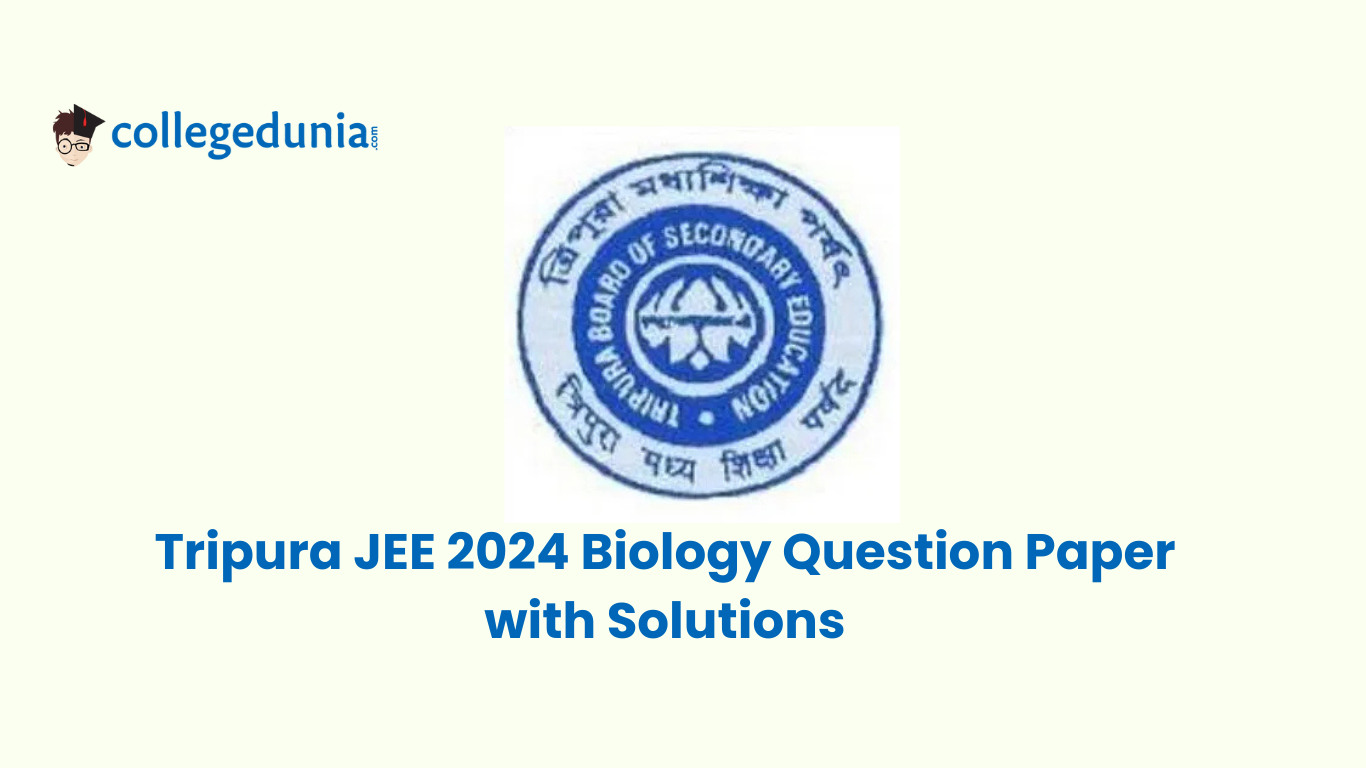Tripura JEE 2024 Biology Question paper with answer key pdf conducted on April 24, 2024 is available for download. The exam was successfully organized by Tripura Board of Joint Entrance Examination (TBJEE). The question paper comprised a total of 30 questions.
Tripura JEE 2024 Biology Question Paper with Answer Key PDFs
| Tripura JEE 2024 Biology Question Paper with Answer Key | Check Solution |

Question 1:
Where do you find 'Ball and Socket' joint in human body?
If occipital lobe in cerebrum is damaged, which action is lost?
View Solution
Which hormone promotes glycogenolysis and gluconeogenesis?
View Solution
Which of the following is not the function of the liver?
View Solution
Stomata of which plants are opened at night?
View Solution
Which part of nephron is responsible for active reabsorption of sodium?
View Solution
Which of the following is associated with Barr body?
View Solution
Which of the following has more similarity with modern man?
View Solution
Which of the following pairs is correct?
View Solution
Which is the common term for cancer of epithelial cells?
View Solution
Which of the following is used for bread-making?
View Solution
What is yogurt?
View Solution
What are the most important livestocks in India?
View Solution
Which of the following is not an antibiotic?
View Solution
Which of the following DNA is made from RNA?
View Solution
Who first proposed the term 'biodiversity'?
View Solution
The genetic material of influenza is
View Solution
Which one of the following is the first stable compound in Krebs cycle?
View Solution
Which one of the following is a non-protein enzyme?
View Solution
Which of the following cells is round and biconcave?
View Solution
Which one is the origin of lysosome?
View Solution
'Oral contraceptive pills' help in birth control by
View Solution
What is the function of manganese in plants?
View Solution
Which of the following is believed to be the cause of dyslexia?
View Solution
Which of the following is an example of Gene bank?
View Solution
Fungal part of lichen is called
View Solution
Which of the following restriction enzymes produces blunt ends?
View Solution
DNA fragments are
View Solution
Which of the following is a protein deficiency disease?
View Solution
When was WHO established in Switzerland?
View Solution


















Comments